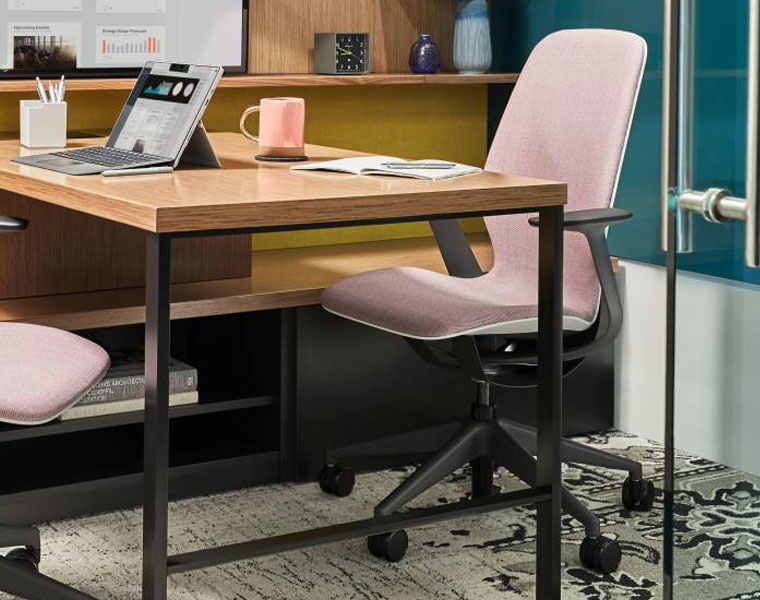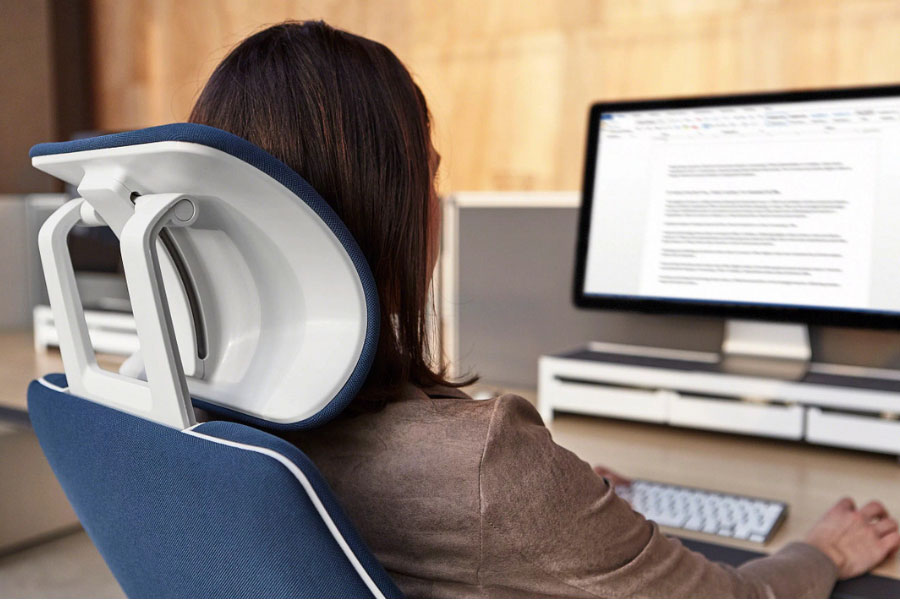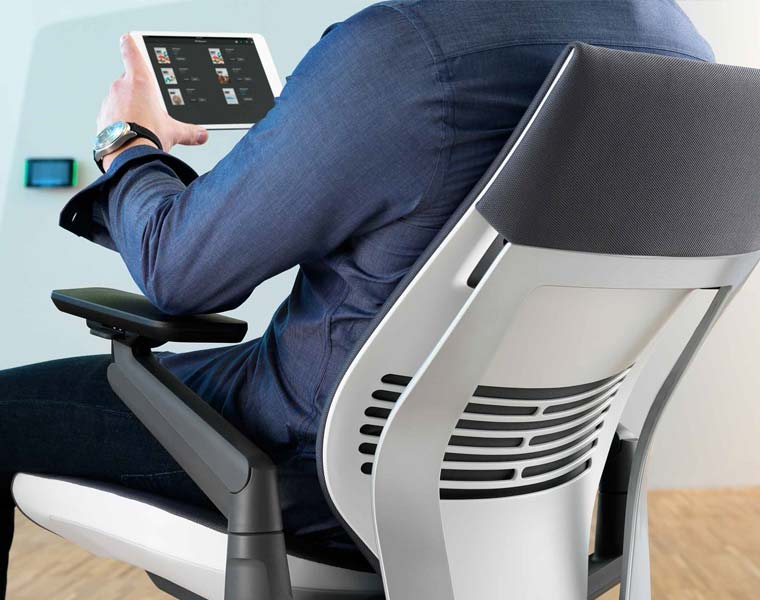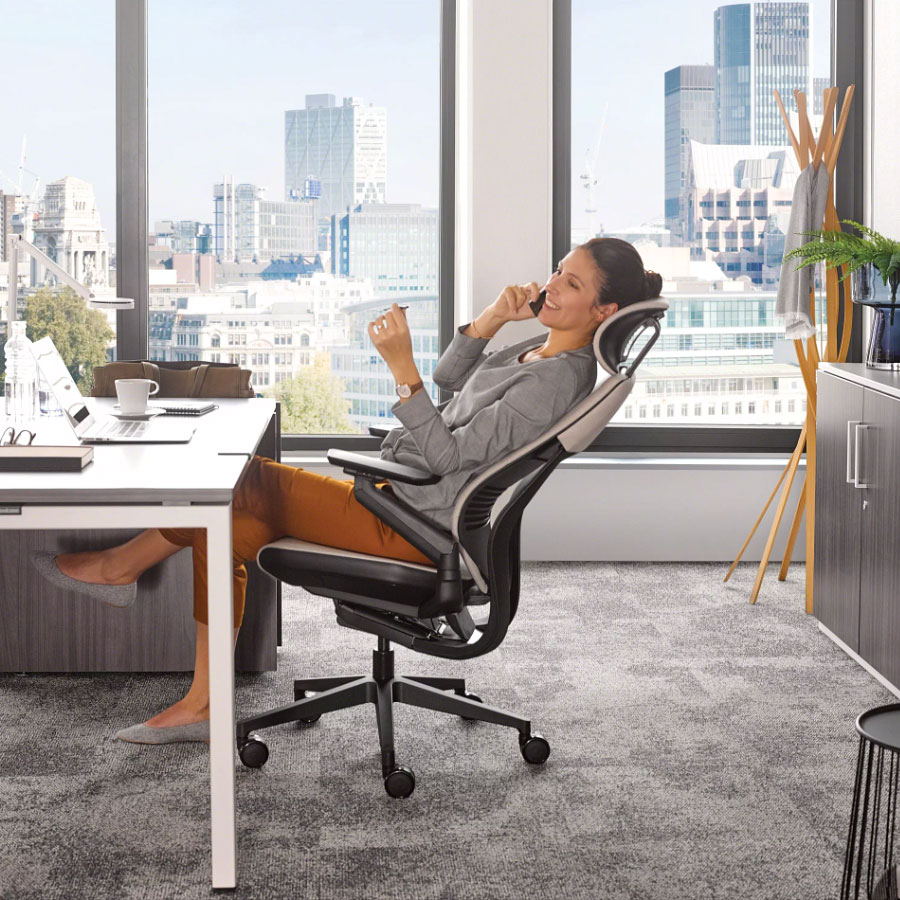As self-confessed furniture geeks who like to stay at the forefront of product development, we tend to focus a lot on the future. We’re always talking about how important it is to future-proof your workspace and forever speculating about the future of commercial interior design based on research and insights.
What we don’t do enough of is looking back into the past to find out about the stories behind the products we admire today. What simple little invention was it that started the ball rolling for some of the most intuitive and advanced furniture we have in our workspaces today?
While the future is undoubtedly the main focus for what we do, it’s also good to look back every now and again to see just how far things have come – and where better to start than the classic office task chair?
When were office task chairs invented?
Well, there isn’t really one simple answer to this question. The invention of the task chair as we know it today was a long process of evolution and in many ways, is still very much a work in progress as research continues to develop over time.
Let’s take a look at some of the most pivotal points in the development of the good old swivel chair…
1900 BC
One of the very first examples of chairs designed for purpose were the seats Egyptian artisans sat on to carry out their work. They used tilted stools which were made in such a way to support the leant-forward posture that was typically required.
Early 1840s
As for the classic office chair we know and love today, this is thought to originate more than two centuries ago, in the rather resourceful “wooden arm chair on wheels” created by Charles Darwin. Darwin attached some legs and wheels to his chair so that he could manoeuvre around his workspace more easily and access his specimens more easily.

1849
The introduction of rail transport in the mid-19th Century meant that businesses began to expand and therefore needed more staff. This gave rise to a boom in clerical workers who spent a great deal of time sat down every day.
This shift in working life called for new features on the office chair that hadn’t yet been introduced. These new features were largely based around improving comfort for those now spending so much of their days in a seated position.
In 1849, American inventor, Thomas E. Warren designed the Centripetal Spring Armchair. This chair used a swivel mechanism and castors to enable office workers to more easily reach things without having to stand up. It featured cast iron legs, velvet upholstery and a ‘skirt’ to conceal the springs underneath the seat.

1904
A few years later, designer Frank Lloyd Wright created the Larkin Building chair which was designed to help typists with comfort and posture. Sadly, the precarious seat soon came to be known as the ‘suicide chair’ as it had a tendency to tip over with the user on it. A case of flawed engineering that was an influential in evolution as the successes.

1976
As the decades passed, more and more office chair designs emerged but it was only really during the 1970s that modern ergonomics started to come into play. Take Emilio Ambasz and Giancarlo Piretti who were designed the Vertebra Chair which, as the name suggests, was inspired by the spine and was one of the first automatically adjustable seating solution ever introduced to market.
In 1976, Herman Miller designer, Bill Stumpf created the famous Ergon Chair which is thought to be a pioneering product in task chair design. The Ergon Chair was the first chair invented with the motive of improving comfort for the human body and sustaining physical health. It featured foam-filled seat and back, more complex spine support than ever before, gas-lift levers to adjust height and tilt, and five-star legs with easy-glide castors.
Stumpf had studied orthopaedics and analysed the movements of office workers through timelapse photography. He used new science of ergonomics to introduce things like increased height adjustment. Previously, chairs rarely lowered any more than 18”, even though the average woman’s leg was 16” from thigh to floor.
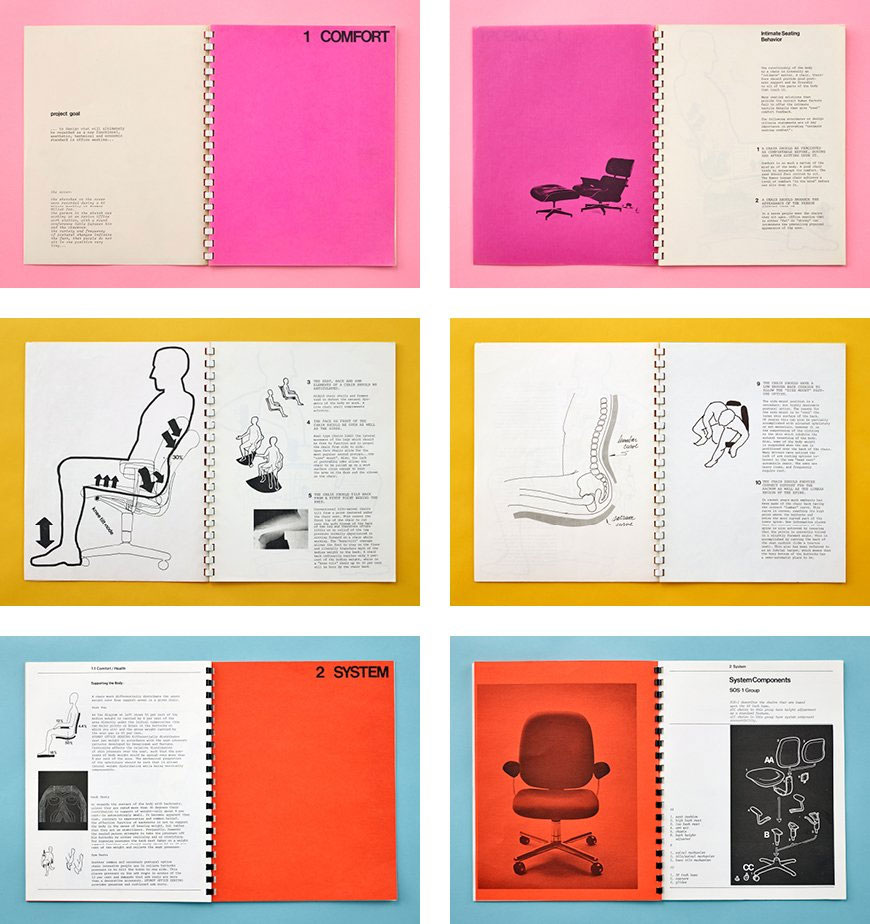
1994
Herman Miller launched another pioneering design onto the office task chair scene during the 90s tech boom. This was the Aeron Chair and was again, designed by Bill Stumpf but this time in collaboration with Don Chadwick. The premise behind this product was to provide what the body needs and not just what the eye wants. Its most notable features were the reactive tilt and the ‘pellicle’ mesh back which supports the back and helps regulate body temperature.

2013
Task chair design continued to evolve with Natural Posture even releasing the bulletproof Guardian Chair in 2013 following the Sandy Hook attack. The most exciting development of 2013 though had to be the launch of Steelcase’s famous Gesture Chair.
Steelcase launched its famous Global Posture Study to gain more insight into how people are using workspaces today. The study revealed 9 new postures which have manifested as workers use a more varied selection of technological devices throughout the day.
The Gesture Chair was created using the finding of this research to provide a seating solution which was more supportive, flexible, adaptable and inclusive than ever before. Features include a back and seat which move as a synchronised system, seat depth adjustment, weight activated mechanism, 360-degree arm movement and mesh-back lumbar support which controls body temperature.

2018
Towards the end of last year, Steelcase launched the all-new SILQ Chair design which has the ability to adapt to the human body without any levers or knobs. The innovative design responds to the natural movement of the human body to provide a seating solution which is personalised to each and every use for complete comfort and support.

So, as you can see, we’ve come along way from tilted stools and spring-loaded seats but we’re also in no doubt that the story of office task chair development isn’t over yet. It’s no secret that we are all spending more and more of our time sat down in sedentary positions so it’s absolutely vital that your workplace seating solutions are doing all they can to support comfort, health and overall employee wellbeing.
